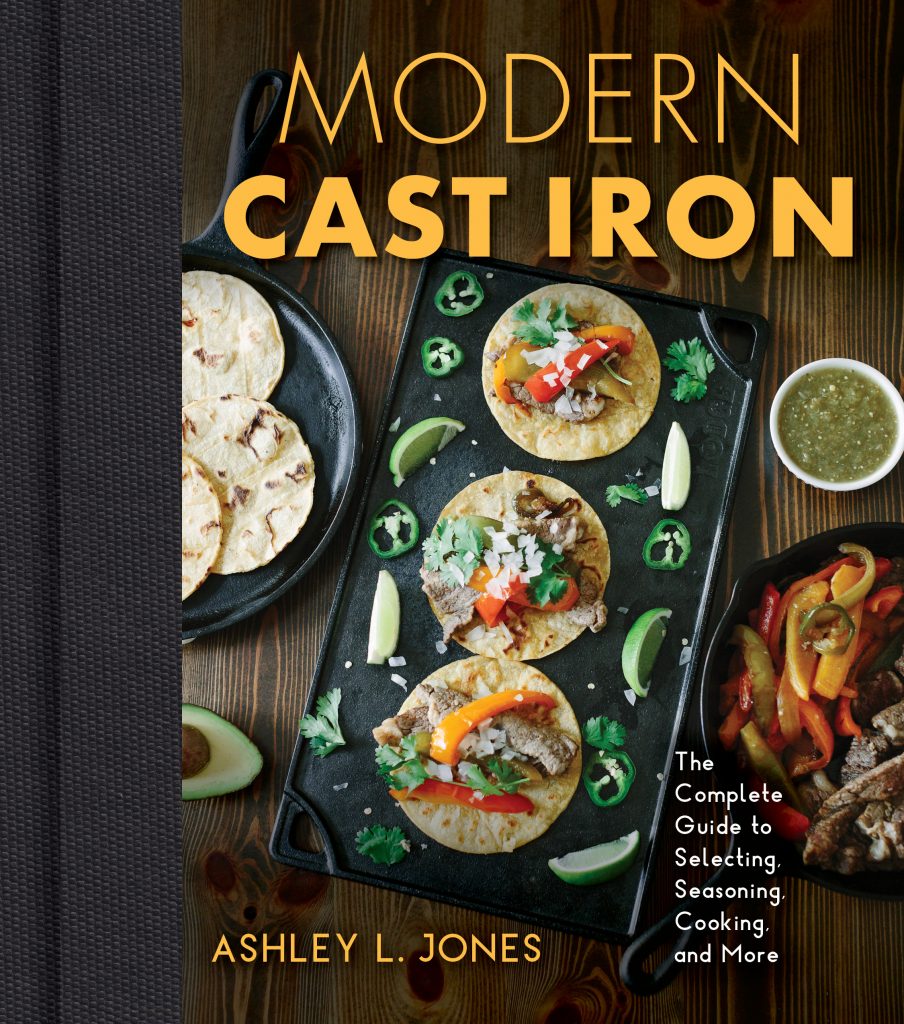
If you’re new to cooking in cast iron, you’ve probably heard the term “seasoning” and wondered what it was. It’s simply that black, natural nonstick coating on your cast-iron pan. This seasoning is created when oil or fat is heated on the cast iron, creating a polymerized layer that is partly bonded to the iron itself. It’s actually a pretty neat chemistry trick, and it makes me wonder if someone figured this out by genius or by accident so many centuries ago. Actually, if my high school chemistry teacher had explained this kind of stuff, I would have paid more attention! Fortunately, we don’t need chemistry majors to understand that oil or fat heated on cast iron equals nonstick seasoning. (Learn more: How to Clean & Season Your Cast-Iron Skillet?)
But what kind of oil or fat should you use? Here’s a short breakdown on some popular (and not-so-popular) options.
Lard
As I explained in my post, 3 Lies Your Grandma Told You About Cast Iron, our grandparents’ generation used lard (or pork fat) to season their pans because that’s what they had. However, fats like lard and butter (products that come from animals) can become rancid over time, so they’re not recommended unless you use your pan every day. Even then, you should know that fats don’t create the hardest, most durable seasoning. What does?
Flaxseed Oil
The folks at the Cook’s Country Test Kitchen did the experimenting for us and determined that flaxseed oil creates the strongest nonstick coating due to its high level of omega-3 fatty acids. (Check out this and other resources on my Cast Iron Research page.) However, flaxseed oil has the lowest smoke point of 225 degrees F. This means you’ll need to keep the temperature relatively low during the seasoning process or the oil could break down, emitting dangerous fumes. Flaxseed oil can also be quite expensive, which may knock it out of your budget. Personally, I think flaxseed oil has an unpleasant smell when heated, so I use it sparingly.
Vegetable Shortening
I used to season with vegetable shortening (with a smoke point of 360 degrees F), but I found that I used too much, causing the oil to build up on the pan leaving a sticky residue. Any oil can actually create this residue, which is caused by too much oil (or fat) with too little heat. In other words, you need a good ratio of oil to heat to get the seasoning just right.
Olive Oil
Nowadays, I use simple olive oil. I can wipe just the right amount of oil on the pan, and a medium heat setting is sufficient to turn that oil into a strong seasoning in just a couple minutes without ever exceeding the smoke point. (Virgin Olive Oil has a smoke point of 420 degrees F.) Plus, I cook with olive oil all the time, so I don’t have to buy anything special just for my seasoning.
If your pan is new and has a strong seasoned coating on it already, you may be able to forego the seasoning all together. Otherwise, you can try an oil spray, which helps you limit the amount of oil used. There are plenty of prepackaged oil sprays on the market, but I like reusable oil sprayers like this Misto Oil Sprayer because it allows me to aerosolize any oil without adding accelerants. Plus, I can reuse the bottle over and over, so there’s no waste.
Coconut Oil
A friend of mine kept seasoning her pan, but food was still sticking. I asked her about her technique and then realized she was using coconut oil. While this is a very healthy oil with a nice smoke point of 350 degrees F (the same as butter), the composition of the oil doesn’t seem to work well for seasoning.
Inedible Oils
Never use an oil or chemical on cast iron that isn’t edible! This may sound ridiculous, but some “experts” recommend using inedible mineral oil or linseed oil to season pans. Remember, the oils comprising your seasoning may leach into your food, so don’t use anything you can’t eat!
Now that you have an idea about which oil to use, be sure to check out my “light seasoning” technique in my post, How to Clean & Season Your Cast-Iron Skillet.
What oil do you use when seasoning your pans? I’d love to hear from you, so leave a comment below.
Pin it for Later

Modern Cast Iron is now available!

I use Olive oil for seasoning myself along with avocado oil which has the highest smoke point. they both work well for me. Good article Thanks Ashley!
Great article! It was also great listening to your audio while reading the article. Sounds really good!
We have been using mostly Extra Virgin Olive Oil since that is what we are cooking with, and it has done well so far, but new info on the subject of cast iron is always good! Thanks so much!
Hey, Jeff! Thanks for stopping by and leaving a comment! Glad you thought the sound was good. I use my web mic for the audio recording.
EVOO has a smoke point of only 320, which makes it ideal for salad dressings and pasta but not so much for cooking–which is strange because celebrity chefs often use EVOO for high-heat cooking. Not good! It might work fine for seasoning, though, since that’s dependent on the make-up of the oil, not its smoke point. (So wishing we had covered this stuff in chemistry class!)